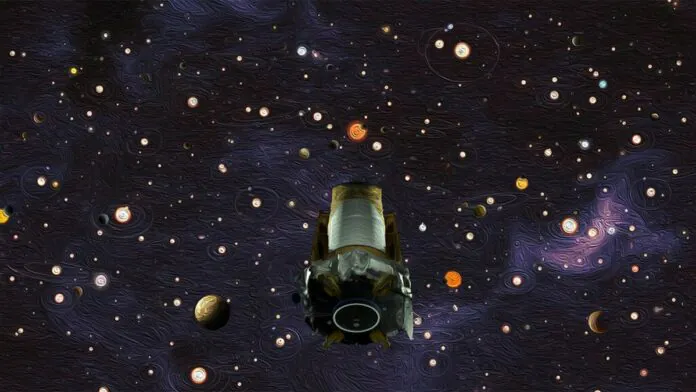© ROOT-NATION.com - Use of content is permitted with a backlink.
In recent decades, the number of known exoplanets has increased dramatically. But we still know very little about some of their features, for example, about composition or massiveness. Jared Siegel, a student at the University of Chicago, was able to extract some clues from NASA’s data that scientists had missed.
He analyzed data obtained by NASA’s Kepler spacecraft. Some of this data was full of statistical noise, but Siegel and his mentor, astrophysicist Leslie Rogers, were able to extract useful information about exoplanets, putting an upper limit on how massive they can be. The research results for Siegel’s master’s thesis were published in The Astronomical Journal.

Siegel and Rogers studied data from the Kepler space telescope, which for nine years monitored bursts of light from distant stars. These flares can occur when a planet passes in front of a star, temporarily dimming its light. Many scientists have already analyzed this data, finding evidence of the existence of more than 2,600 exoplanets. But Siegel and Rogers wondered if there was a way to use statistical methods to get even more information.
Their approach was based on the fact that the Kepler telescope had discovered many stars around which several planets appear to be orbiting. The tug of these planets’ gravity should change their orbits slightly compared to how they might move if only one planet was orbiting the star. The more massive these planets are the stronger these disturbances.
“If we know there are multiple planets in a system but we don’t see big perturbations to the transit times, we know the planets can’t be particularly massive,” explained Siegel. “For example, we could say they’re likely not Jupiter-mass, because then they’d be pulling on each other in noticeable ways.”

The scientists explained that this is important information because they can begin to rule out options for what the planet is made of. “For example, you can say, ‘Well, this planet is too light to be made of pure iron,'” said Siegel. “For over twenty planets, we can say ‘this planet is too light to be composed of Earth-like material.'” This information also helps scientists better understand exoplanet populations. “We really want to know how many planets in a given mass range are likely to be rocky, or waterworlds, or gas planets,” said Rogers.
You can also help Ukraine fight with Russian occupants via Savelife or via an official page of the National Bank of Ukraine.
Recommended reading:
- Better To Crash? NASA Is Testing the Benefits of a Crash Landing on Mars
- What Are the Oldest and Youngest Starts in the Galaxy?


